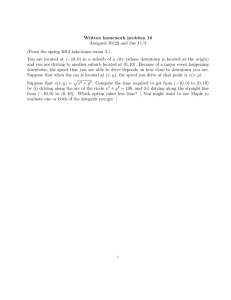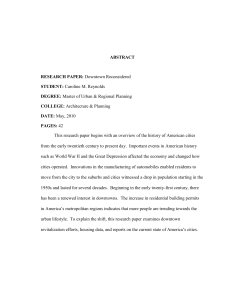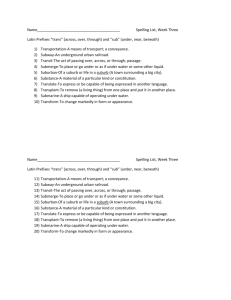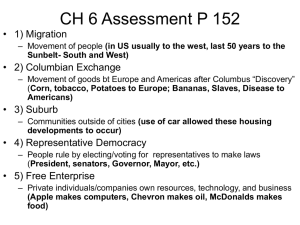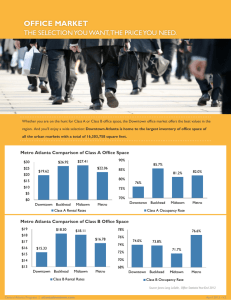Chapter 5: Metro and Edge City Growth
advertisement
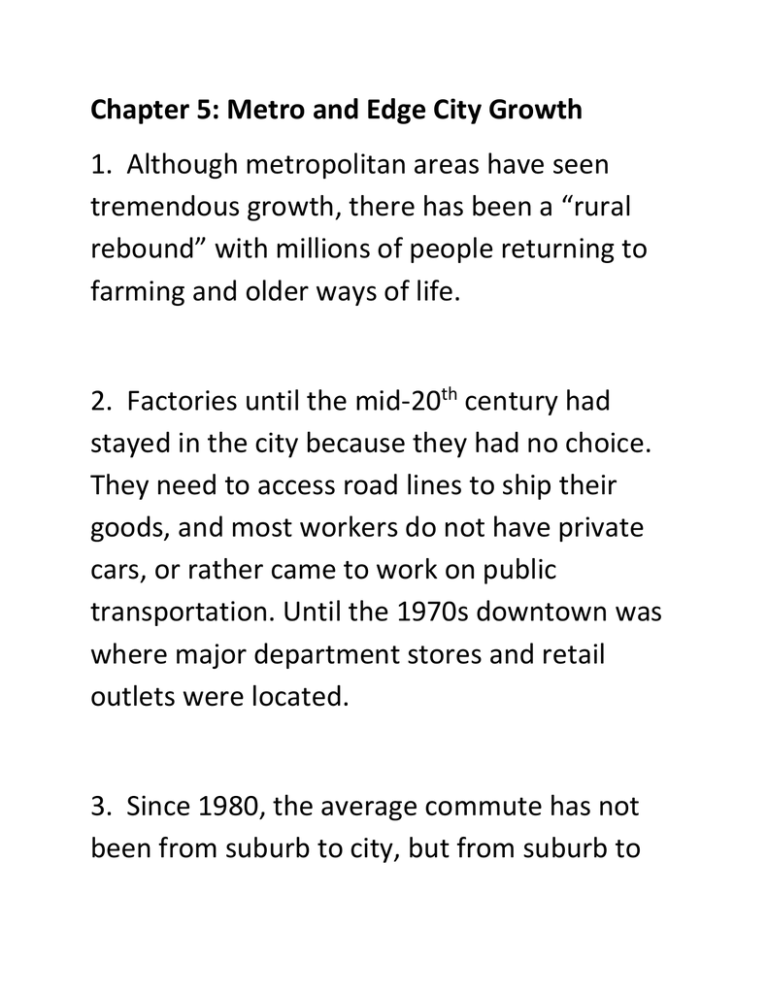
Chapter 5: Metro and Edge City Growth 1. Although metropolitan areas have seen tremendous growth, there has been a “rural rebound” with millions of people returning to farming and older ways of life. 2. Factories until the mid-20th century had stayed in the city because they had no choice. They need to access road lines to ship their goods, and most workers do not have private cars, or rather came to work on public transportation. Until the 1970s downtown was where major department stores and retail outlets were located. 3. Since 1980, the average commute has not been from suburb to city, but from suburb to suburb. Downtown is no longer the major metropolitan employment site. Today 90% of metro areas office space is not in downtown, but suburban. 4. The most important aspect of the automobile was that it has enabled all people to be able to access their places of work. 5. Once dominant cities have lost most of their blue-collar manufacturing jobs. Cities have lost both well-paying union jobs and entry-level jobs to which poor city dwellers traditionally entered labor market. 6. Edge cities are the result a young urban professionals, rappers, and alternative lifestyle groups creating culture on the “fringe” or “edge” 7. The rise of the Sunbelt which includes popular destinations for real estate development and tourism, has also led to increased population growth and increased taxes to help pay for public infrastructure.
